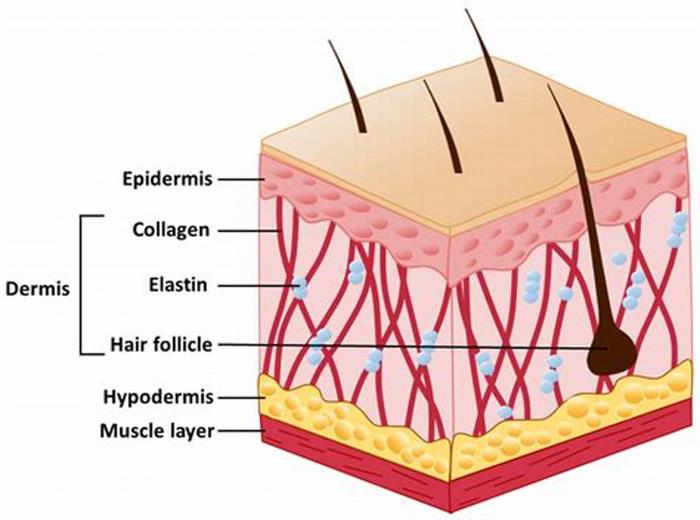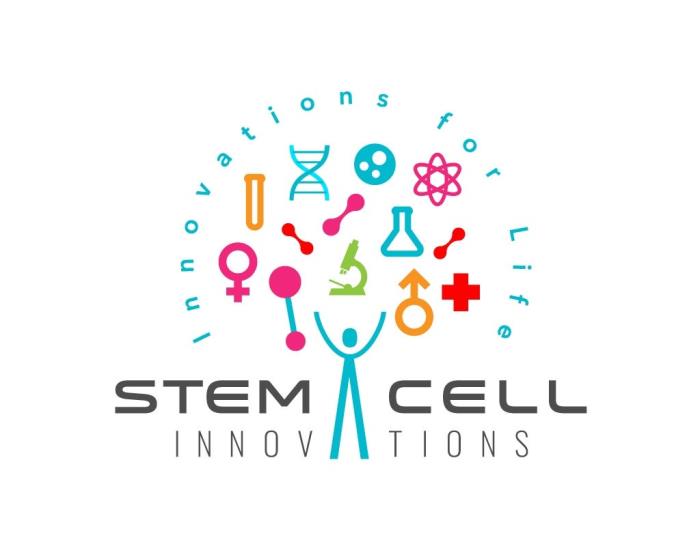Stem cells have emerged as a cornerstone in regenerative medicine, particularly in the field of skin health. These unique cells possess the remarkable ability to differentiate into various cell types, making them crucial for the maintenance, repair, and regeneration of tissues, including the skin. As our understanding of stem cells grows, so does their potential application in treating various skin conditions, promoting wound healing, and enhancing the outcomes of skin grafting procedures.
What are Stem Cells? An Overview of Their Types
Stem cells are undifferentiated cells that have the unique capacity to develop into specialized cell types. There are two primary categories of stem cells: embryonic stem cells and adult (or somatic) stem cells. Embryonic stem cells are derived from early-stage embryos and can give rise to nearly all cell types in the body.
In contrast, adult stem cells, found in various tissues, including skin, are responsible for maintaining and repairing the specific tissues in which they reside. Adult stem cells can be further classified into multipotent stem cells, which can differentiate into a limited range of cell types, and unipotent stem cells, which can develop into one specific type of cell.
The Role of Stem Cells in Skin Regeneration
Stem cells play a vital role in skin regeneration by continuously replenishing the skin’s cellular components. In the skin, epidermal stem cells are primarily responsible for the production of keratinocytes, the predominant cell type in the outer skin layer. These stem cells are located in specific regions, such as the hair follicles and the basal layer of the epidermis. During skin injury or aging, stem cells activate, proliferate, and differentiate to repair and regenerate damaged tissue, ensuring the skin remains healthy and functional.

How Stem Cells Contribute to Wound Healing
In wound healing, stem cells are crucial in orchestrating the complex biological processes required for tissue repair. When the skin is injured, stem cells migrate to the wound site and proliferate, differentiating into various cell types needed for healing, including fibroblasts, which produce collagen, and endothelial cells, which form new blood vessels. This process enhances tissue regeneration, reduces inflammation, and promotes the formation of new skin. Additionally, stem cells secrete growth factors and cytokines that modulate the healing environment, further facilitating recovery. Their ability to adapt and respond to the needs of the injured tissue makes stem cells a valuable asset in the wound healing process.
Stem Cells and Their Potential in Skin Grafting
Stem cells hold great potential in improving the outcomes of skin grafting procedures by enhancing graft survival and integration. By incorporating stem cells into grafts, surgeons can promote better healing, reduce scarring, and improve the functional and aesthetic results of grafted skin. Stem cell-enriched grafts may facilitate the regeneration of skin cells and enhance vascularization, ensuring the graft receives adequate blood supply. Furthermore, research into the application of stem cells in skin grafting continues to evolve, with the potential for developing advanced therapies that utilize stem cell properties to create bioengineered skin substitutes and improve treatment strategies for severe skin injuries.

Understanding Skin Grafts: Types and Applications
Skin grafts are categorized into different types based on their source and thickness. Autologous grafts, taken from the patient’s own skin, are commonly used for burns and chronic wounds. Allogenic grafts, sourced from donors, serve as temporary coverings. Xenografts, from animals, are often used for short-term management. Each type has specific applications based on the patient’s condition and the extent of the injury.
The Mechanisms of Stem Cell Action in Skin Repair
Stem cells play a crucial role in skin repair by differentiating into various cell types, promoting tissue regeneration, and modulating inflammation. They secrete growth factors and cytokines that enhance wound healing and stimulate the formation of new blood vessels, thereby supporting the overall repair process.

Advances in Stem Cell Therapy for Burn Treatment
Recent advances in stem cell therapy have shown promise in burn treatment, particularly in improving healing rates and reducing scarring. Techniques such as culturing stem cells from the patient’s adipose tissue or bone marrow allow for the development of specialized treatments that can be directly applied to burn wounds.
Ethical Considerations Surrounding Stem Cell Research
Stem cell research raises various ethical considerations, particularly regarding the sourcing of embryonic stem cells. Discussions focus on balancing the potential benefits of stem cell therapies with ethical concerns surrounding consent, the moral status of embryos, and equitable access to treatments.

Current Research: Stem Cells in Skin Regeneration
Current research is exploring the efficacy of different stem cell types in skin regeneration, including mesenchymal stem cells (MSCs) and induced pluripotent stem cells (iPSCs). Studies are investigating how these cells can enhance wound healing, promote graft integration, and improve outcomes for patients with chronic wounds.
The Future of Skin Grafting: Innovations in Stem Cell Technology
Innovations in stem cell technology are paving the way for more effective skin grafting techniques. Researchers are developing bioengineered skin grafts that incorporate stem cells, allowing for better integration and faster healing times. These advancements may lead to improved cosmetic outcomes and reduced complications.

How Stem Cells Can Improve Graft Acceptance and Integration
Stem cells can enhance graft acceptance by promoting angiogenesis (the formation of new blood vessels) and reducing inflammation at the graft site. Their ability to modulate the immune response helps create a favorable environment for graft integration, minimizing the risk of rejection.
Challenges in Utilizing Stem Cells for Skin Grafting
Despite the potential benefits, challenges remain in utilizing stem cells for skin grafting, including variations in cell quality, sourcing, and the need for standardized protocols. Additionally, there are concerns regarding the long-term effects of stem cell treatments and the risk of tumor formation.
Stem Cell Sources: Autologous vs. Allogenic Options
Autologous stem cells, derived from the patient’s own body, minimize the risk of rejection and complications, making them a preferred choice for many treatments. Allogenic stem cells, sourced from donors, can provide immediate options but may require immunosuppressive therapy to prevent rejection.
The Role of Stem Cells in Treating Chronic Wounds
Stem cells have shown promise in treating chronic wounds by promoting healing and tissue regeneration. Their ability to enhance collagen production, stimulate growth factor release, and improve vascularization makes them a valuable option for patients with non-healing ulcers and other chronic skin conditions.
Enhancing Skin Graft Outcomes with Stem Cell Treatments
Combining traditional skin grafting techniques with stem cell therapies has the potential to enhance outcomes significantly. Stem cells can improve graft survival rates, accelerate healing, and reduce complications, leading to better functional and aesthetic results.
Patient Experiences: Success Stories of Stem Cell Applications
Patients who have undergone stem cell treatments alongside skin grafting often report positive outcomes, including improved healing times and reduced scarring. Personal success stories highlight the transformative impact of these innovative therapies on quality of life and recovery.
Stem Cells in Aesthetic Dermatology: Beyond Grafting
In aesthetic dermatology, stem cells are being explored for their potential in anti-aging treatments, scar revision, and skin rejuvenation. Their ability to stimulate collagen production and enhance skin elasticity positions them as promising tools for cosmetic applications.
Clinical Trials: Exploring Stem Cell Applications in Dermatology
Numerous clinical trials are underway to investigate the effectiveness of stem cell applications in dermatology, focusing on skin grafting, chronic wound healing, and aesthetic enhancements. These trials aim to provide evidence-based insights into the safety and efficacy of stem cell therapies.
Conclusion: The Promising Future of Stem Cells in Skin Regeneration
The future of stem cells in skin regeneration is promising, with ongoing research and innovations leading to potential breakthroughs in treatment options. As techniques continue to evolve, stem cells may become integral to standard practices in dermatology and wound care, improving patient outcomes and quality of life.
The Importance of Skin Graft Donor Sites in Burn Treatment
Understand the critical role of donor sites in the skin grafting process. This section discusses how the selection and management of donor sites can affect the healing of both the grafted area and the donor site itself, emphasizing the need for careful planning and care in burn treatment.
The Role of Compression Therapy After Skin Grafting
Discover the benefits of compression therapy following skin grafting. This section explains how compression can help improve healing, minimize scarring, and support the newly grafted skin, making it an essential component of post-operative care.
Best Skin Grafts for Burn Treatment in India
The Best Skin Grafts for Burn Treatment in India offer effective solutions for severe burns, helping restore skin function and appearance through advanced surgical techniques.
Best Hospitals for Skin Grafts in India
The Best Hospitals for Skin Grafts in India are equipped with cutting-edge technology and experienced specialists, providing comprehensive care for patients from initial consultation to recovery.
Skin Graft Surgery Cost in India
The Skin Graft Surgery Cost in India is affordable and transparent, ensuring patients receive high-quality care without compromising on the standards of treatment.
Best Skin Graft Surgeons in India
The Best Skin Graft Surgeons in India are experts in reconstructive surgery, providing personalized and precise care to ensure the best outcomes for burn patients.
FAQ
How do stem cells contribute to skin regeneration?
Stem cells promote skin regeneration by differentiating into skin cells, secreting growth factors that stimulate healing, and enhancing tissue repair mechanisms. They also help modulate inflammation, creating a favorable environment for healing.
What types of stem cells are used in skin grafting?
Commonly used stem cells in skin grafting include mesenchymal stem cells (MSCs) and induced pluripotent stem cells (iPSCs). These cells can be sourced from adipose tissue, bone marrow, or reprogrammed from adult cells.
Are there any risks associated with stem cell treatments for skin grafts?
Potential risks include infection, immune reactions, and the possibility of tumor formation. Ensuring proper sourcing, processing, and administration of stem cells can help mitigate these risks.
How does stem cell therapy improve healing after skin grafting?
Stem cell therapy improves healing by enhancing blood flow to the graft site, promoting cell growth and differentiation, and reducing inflammation. This leads to faster integration and better overall outcomes.
What is the future outlook for stem cells in dermatological treatments?
The future of stem cells in dermatology looks promising, with ongoing research and clinical trials exploring their applications in wound healing, scar management, and aesthetic treatments. Advances in technology and techniques may lead to broader acceptance and use in clinical practice.